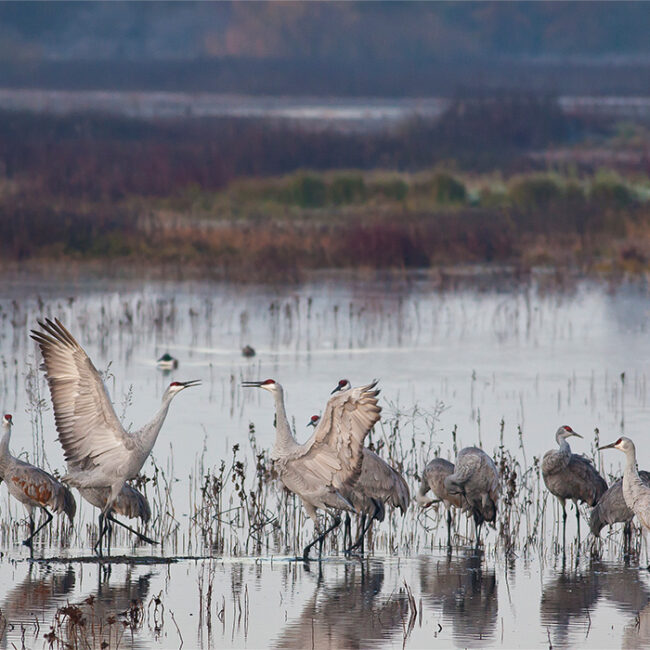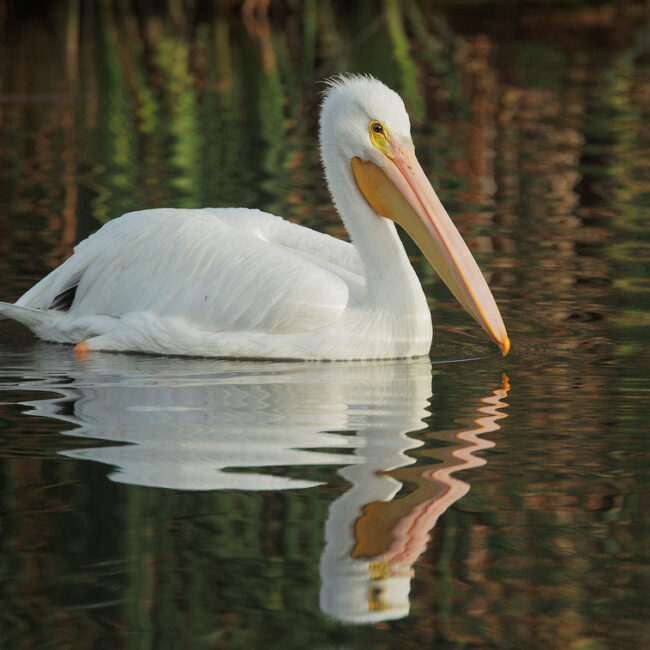Wetlands of the Central Valley
There are a variety of wetland types that contribute to the mosaic of habitat that waterfowl, shorebirds, and other wetland-dependent wildlife rely on each year.
Each wetland type requires different water management, both in terms of the overall volume of water that must be applied and timing of delivery.
Brian Gilmore

Winter-Flooded Rice
Post-harvest fields, flooded to decompose harvest residue, provide waste-grain and invertebrates for waterfowl and shorebirds from late September through March. These surrogate wetlands provide up to 60% of the habitat and 56% of the energy needs for ducks in the Central Valley.
Mike Peters

Seasonal Wetlands
Flooded October through March then drained and irrigated in spring/summer to promote seed production, food for birds during the fall and winter. Alternatively, “reverse cycle wetlands,” are flooded March through July, providing optimal conditions for invertebrate production beneficial to breeding ducks and ducklings.
Jennifer Barton

Permanent Wetlands
Permanent marsh that remains flooded throughout the year, providing year-round habitat for many local and migratory birds, especially locally nesting ducks, their broods and for post-breeding molting adults.
Philip Robertson

Temporary Wetlands
Land that is flooded for less than two months. These include wet meadows and flood plains, which are valuable to local and migrating birds when available, especially in drier areas of the San Joaquin and Tulare regions. Migrating shorebirds and waterfowl can take advantage of these.
BLM
Working Lands
Collaboration with rice producers has resulted in management practices that meet both an agricultural need for postharvest straw decomposition and a wildlife need for surrogate wetlands. The CVJV’s objective is to maintain the 340,670 acres of winterflooded rice and 34,408 acres of non-deep plowed grain corn that is now available to waterfowl,







